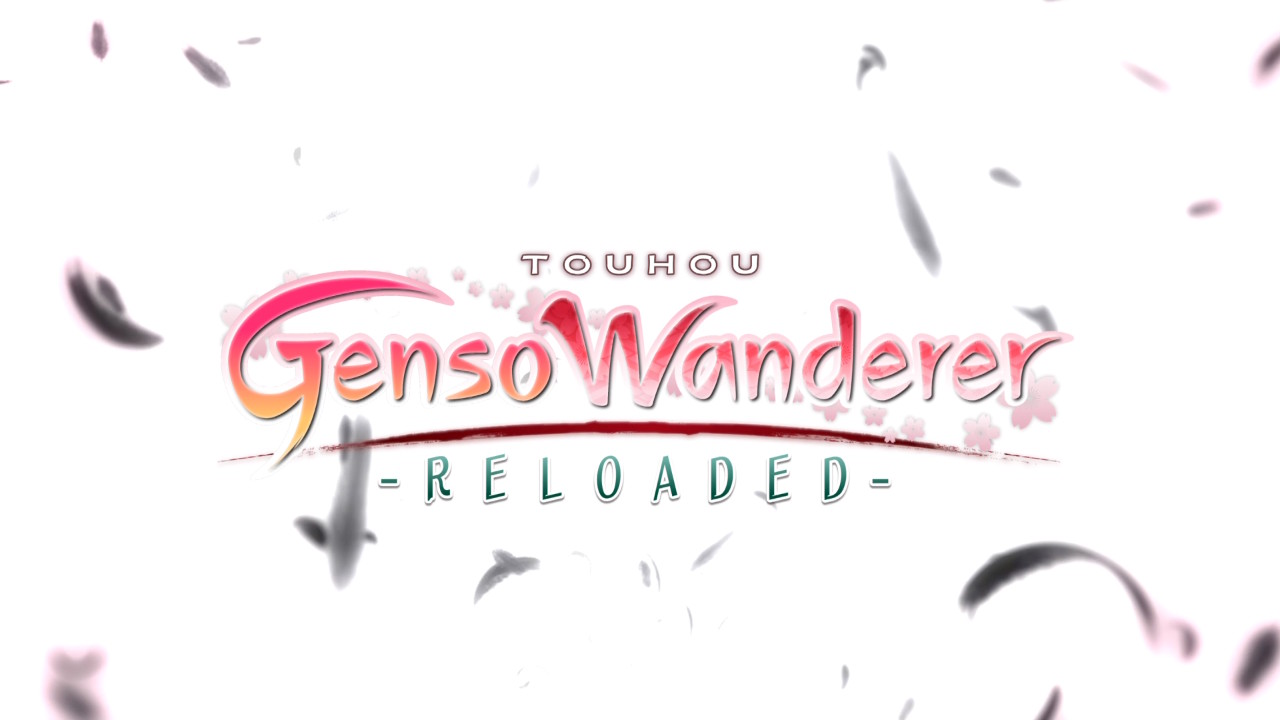Touhou Genso Wanderer Reloaded
Nintendo Switch
Developed By: AQUA STYLE
Published By: NIS America
Category: RPG, Visual Novel
Release Date: 7.17.18
NIS America’s mission to bring as many aspects of Otaku gaming culture to the US as possible continues with Touhou Genso Wanderer Reloaded for the Nintendo Switch. And man, does it require a lot of explaining before you even open the game. Well, I guess it doesn’t require it all the way, but it doesn’t hurt to have some background. And there’s a lot of background.
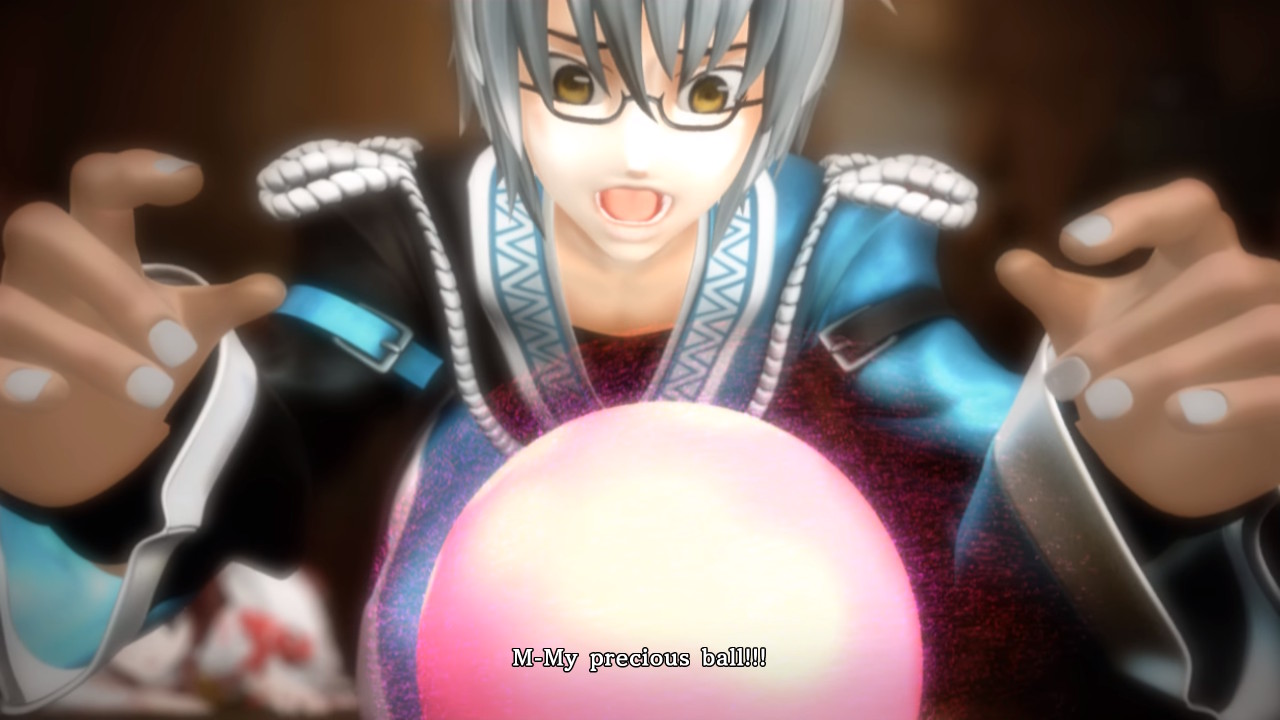
Touhou Project
The Touhou Project is a long series of bullet hell shooters that never really left Japan’s shores that turned into an otaku phenomenon. The main series is created by one man, ZUN, through his studio Team Shanghai Alice. There are 16 entries in the main series, as well as dozens of light novels, a spinoff fighting game series, side-story shooters, manga, fan-made anime, and some fan-made games. There are dozens of characters and it has one of the most passionate fanbases in the Japanese gaming world because of them.
Having a history that deep is pretty darn cool, but it’s also kind of daunting to try and get into; at the very least I know I had a tough time getting up to speed. Touhou Genso Wanderer Reloaded is a remake of a fan-made game which was first released for the PS4 and PSVita. Reloaded features the entire original game, plus all the original DLC, and even some brand new missions all in one new package. It’s a ton of value stuffed into one package.
The series takes place in a magical realm called Gensokyo where humans and yokai (demons, if you’re not up on your anime tropes) live together. Not really in harmony, but not not in harmony, I guess. Reimu Hakurei is a shrine maiden at the Hakurei Shrine charged with protecting the peace and keeping the yokai in line. She is the protagonist of most of the series, save for a few spinoffs, and she is the player’s character in Reloaded.
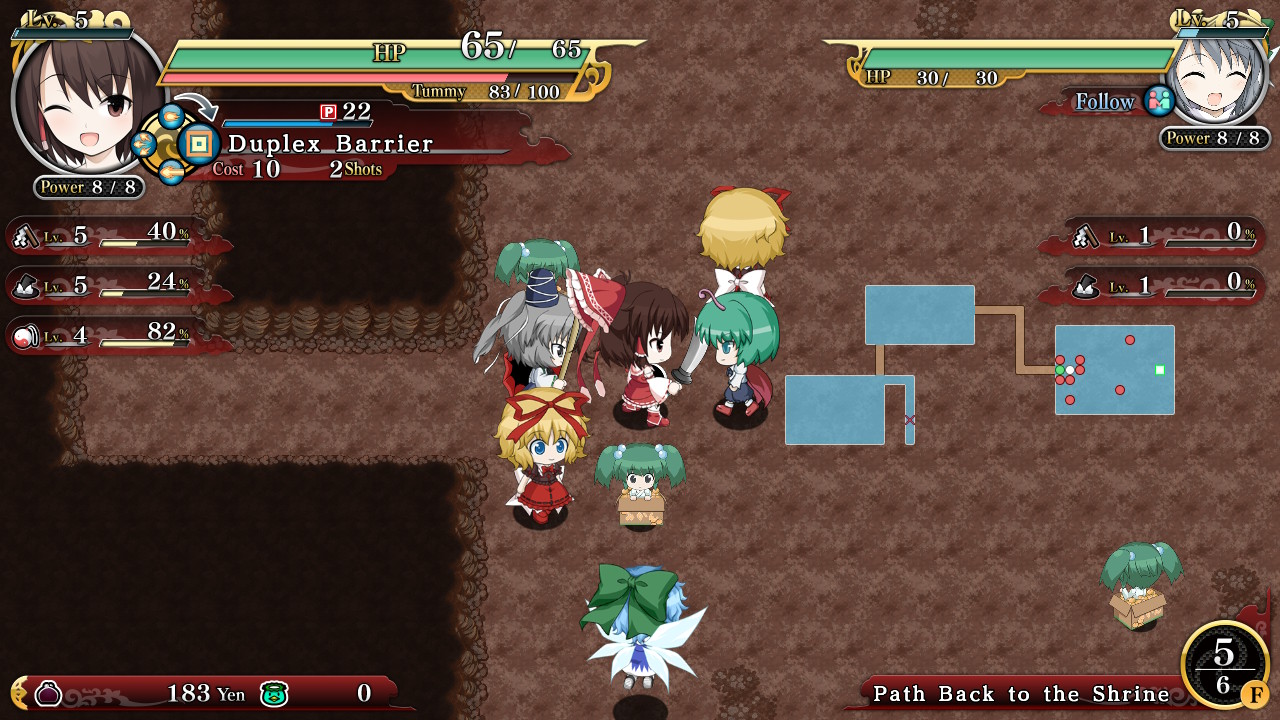
Story
The game begins with Reimu slacking off and getting caught in the rain. She runs to a nearby building, an antique shop called Kourindo owned by her friend Rinnosuke. Their relationship seems a bit rocky – apparently Reimu likes to spend time in the shop but never buys anything. I’ve worked retail long enough to not appreciate that myself, so I feel you, Rin. Rinnosuke has just gotten a new artifact in his shop, a mysterious golden orb that entrances Reimu. She wants to touch it but Rinnosuke thinks that’s a bad idea; eventually she gets her way, but knocks the orb out of Rin’s hand in the process. When Reimu touches the orb, a dark energy gets released that Rinnosuke absorbs. He goes nuts and attacks Reimu, and she uses a spell to escape to a nearby cave.
Once in the cave, Reimu decides to make for the Hakurei Shrine, her home. She makes it out of the shrine after meeting Futo, a sage-in-training who asks Reimu to introduce her to a master sage. In the cave, Reimu and Futo are beset by yokai, which we later discover are copies of other residents of Gensokyo created by Rinnosuke and his new orb powers. After making it back to the shrine, Reimu goes to sleep for the night, but in the morning the shrine’s resident sage Kasen reminds Reimu that resolving things like incidents involving haunted magic orbs possessing antique dealers is kind of her job. So, with Futo in tow as part of her training, Reimu sets off for the tower that had sprung up overnight where Kourindo used to be.
So… did everyone follow all that? OK, because that’s like the first ten minutes of the game. One of the game’s biggest flaws is that it just throws things at you with little to no explanation; I had to stop playing every few minutes to check a wiki to make sure I was following everything going on. The characters and their relationships are only barely explained in the game, and, given the history involved in such a long-running series, I don’t really know if there’s an easy way to mitigate the issue. Navigating the sheer number of characters, their roles, and their relationships is a huge barrier to entry in the game. That’s not to say I didn’t enjoy the story; there are lots of funny moments in the game that don’t rely on your knowledge of Touhou lore. I just never felt I was fully immersed in the game or its world because of references being made to things I didn’t know anything about.
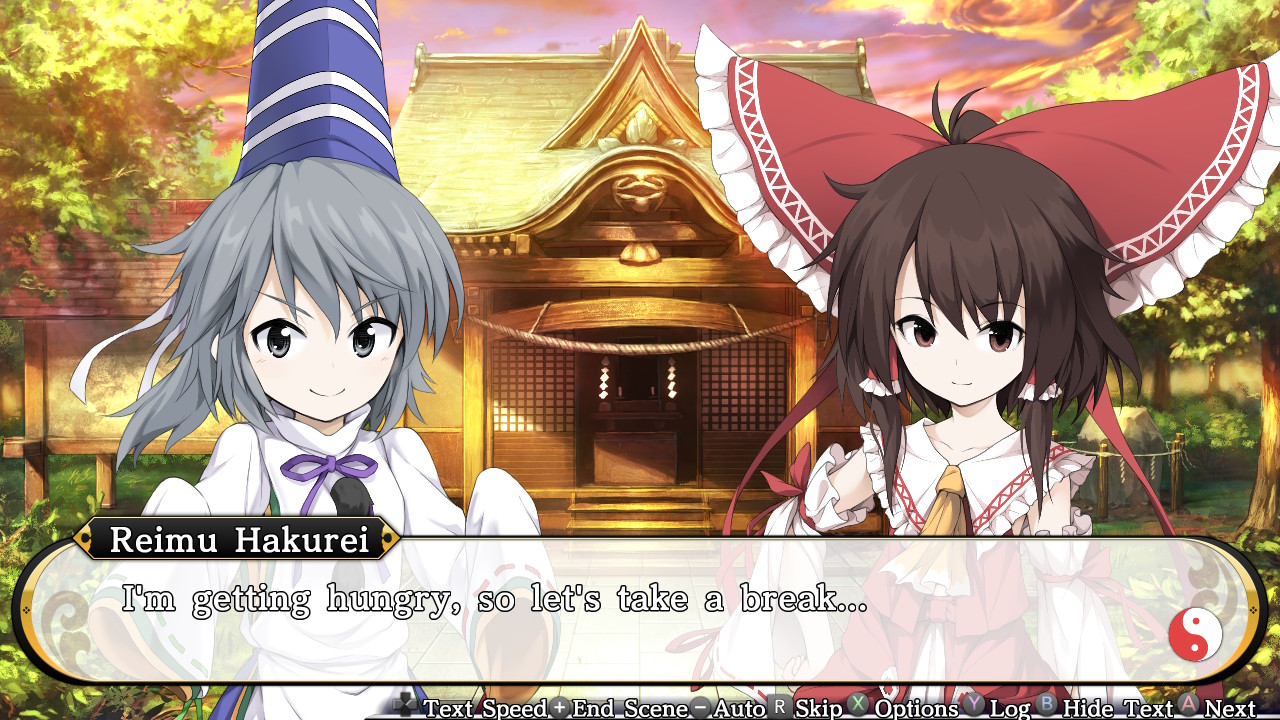
Gameplay
Touhou Genso Wanderer Reloaded is a roguelike, turn-based, action-RPG, which is a pretty intriguing combination in theory. In practice, it has its fun points but one or two flaws to go with them. Taking any action, like walking, attacking, casting a spell, or using an item is one turn, and whenever you take a turn, the enemies on the screen take their turn as well. It’s a system that lends itself to some tactical thinking; certain enemies have patterns they follow, so exploiting those if often the key to victory when there are multiple enemies coming after you. Generally there are only one or two, so you can just whack them until they’re dead, but sometimes there are enough that you should think about it for a minute.
Actions are summarized in a text box in the middle of the screen. It notifies you when you step on a trap, what effects happen when you use an item, or when you or an enemy takes damage. It’s often the only way to know what the heck just happened, but it has some flaws. First, it’s only three lines, and every action takes a separate line. So, if more than three things happen, you’ll just scroll past a lot of things without seeing them. You can view a log of everything in the menu, but it’s kind of a pain in the butt to have to go through the menus after every turn when there is a lot of activity in the game.
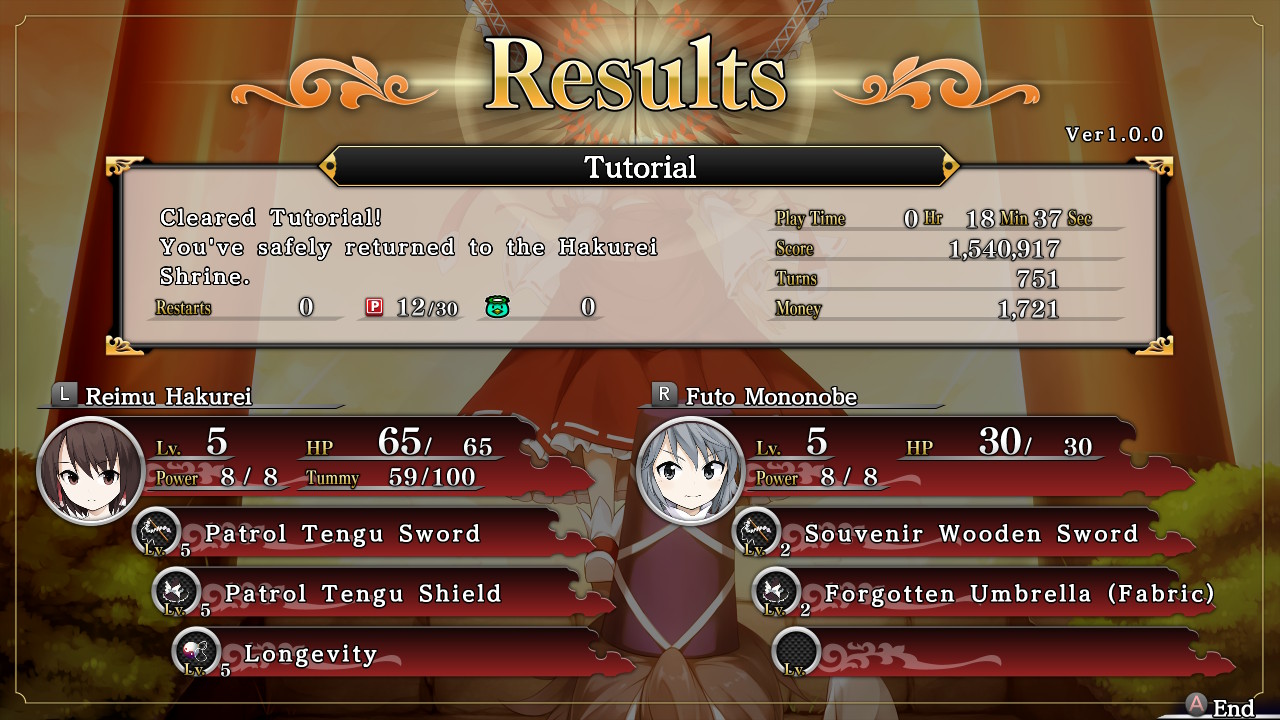
The dungeon levels are randomly generated, which has its drawbacks. I know roguelikes are all the rage now, but sometimes it really doesn’t add anything to the gameplay. That is the case here. There are traps randomly placed on the ground, and while not many of them do any real damage, they are annoying. They can destroy items in your inventory, knock all your weapons out of your hand, or just do damage. So, if you die and have to do a level again, it’s not like you know where not to step now. I suppose it adds to the challenge, but the game has enough going on that adding one more thing to keep track of just makes it all feel a bit much.
There are a couple of gauges to keep track of as well. The HP meter is self-explanatory; getting hit reduces your HP, running out of HP means you die, and you have to restart the dungeon all the way at the beginning. You keep your items, but lose all of your experience. That was one of the biggest problems I had with the game; losing almost all of your character’s progress when you die or start a new dungeon was a huge drag. It really made it feel like I wasn’t really progressing, and having to start at one every time made it hard for me to really get invested in the game.
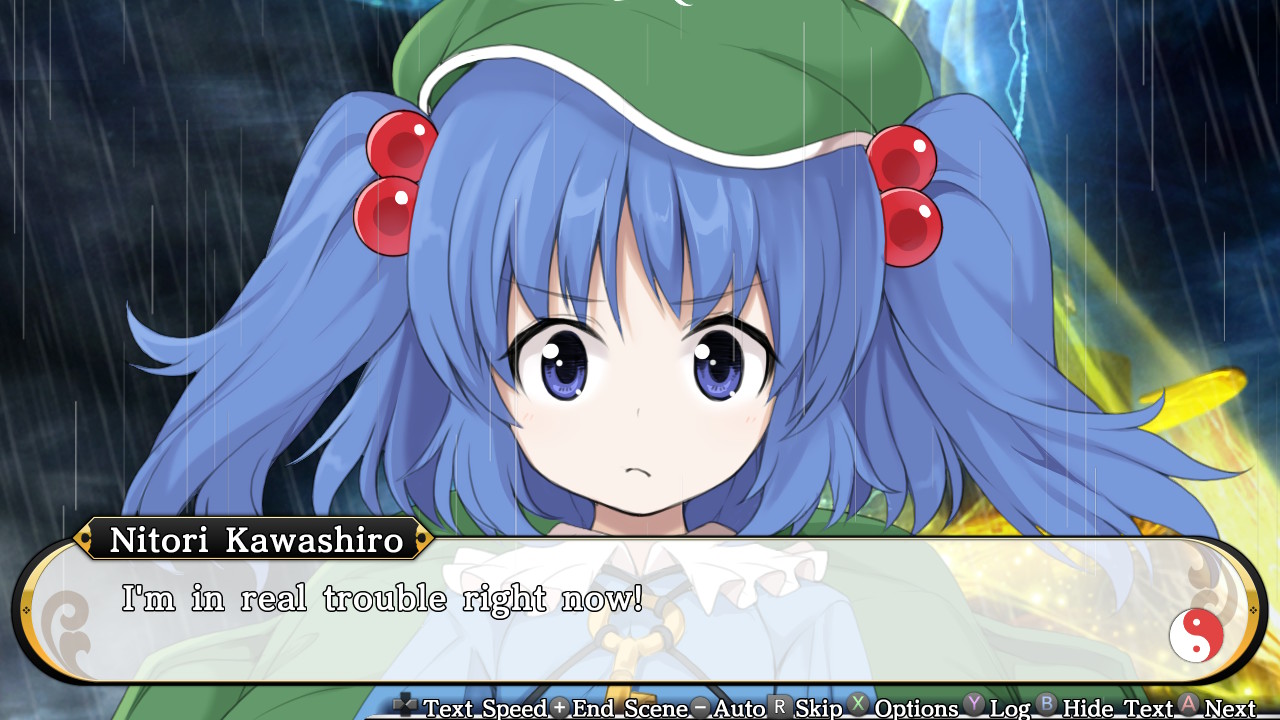
In addition to the HP meter, Reimu has a tummy meter that gauges how hungry she is. As long as the tummy meter has some points in it, Reimu regenerates HP as she walks around. When it hits zero, Reimu gets hungry and suffers some penalties to her stats and stops healing HP. Eating food that can be found in dungeons or by defeating enemies replenishes Reimu’s tummy. Finally, there is the Danmaku gauge that is filled by finding points lying on the ground in dungeons. Danmakus are magic skills used to attack from range. If the meter is empty, you can’t use danmakus. Simple enough, really.
I mentioned Futo in the story section, and she is the first of a few companions that can be recruited in the game. Companions basically follow you around and attack things for or with you. They level up with you, and you have to equip them with weapons and armor just like you do Reimu. If they run out of HP they die, but there are items and shrines all over the various dungeons that will allow you to resurrect them. They don’t have a tummy or danmaku gauge for you to worry about, though, so thank heaven for small favors.
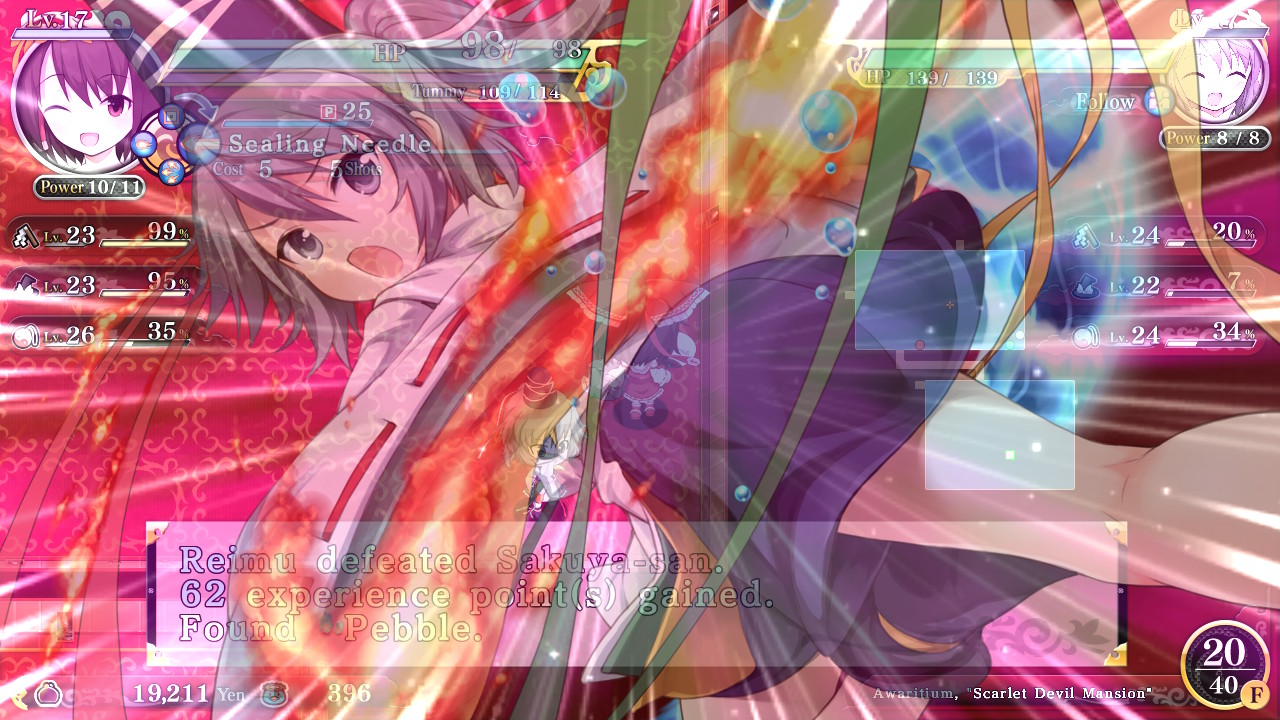
Equipment can gain levels when equipped, which is nice. Even though you lose your levels if you die, your equipment keeps its level, which is a welcome reduction in the penalty for dying. Eventually you get an item called the Nito Fusion Reactor which lets you create and combine items. Combing weapons and armor enhances those items with new or improved attributes. You can also combine raw materials with other items to create better items. For instance, you can combine potions with other ingredients to create more powerful potions. You need Nito points to perform any fusion, which you get during combat and by breaking down other items.
There are three types of equipment; weapons, shields, and accessories. They’re pretty self-explanatory if you’ve ever played an RPG before; weapons increase attack, shields increase defense, and accessories do a little of both, in addition to sometimes having other special properties. There are a ton of different types of items; food, potions, spells, scrolls, and gaps. Food we already went into and potions are easy to explain; use them to heal HP or cure harmful status effects or cause good ones. Spell cards and scrolls both cast magic. Spell cards generally unleash abilities that affect the whole dungeon level, whereas scrolls only affect one enemy at a time. Gaps are storage items; you place items inside of them to make more room in your base inventory (you can only hold 30 items at a time, which is not nearly enough). You can open them by throwing them at walls or enemies, scattering the items on the ground.
Whew. That was a lot; and it’s not even really everything. That was all the basics, though, and I feel like that was complicated enough. That’s really the game’s biggest weakness; there’s just a lot going on at any time and it can get to be a lot to keep track of. There are a lot different systems to operate and keeping track of their progress is a lot to handle. I didn’t even get into the game’s investment systems, in part because I never really understood them, and the game doesn’t always exactly make it clear what you’re investing in or when you should check in to see if it paid off.
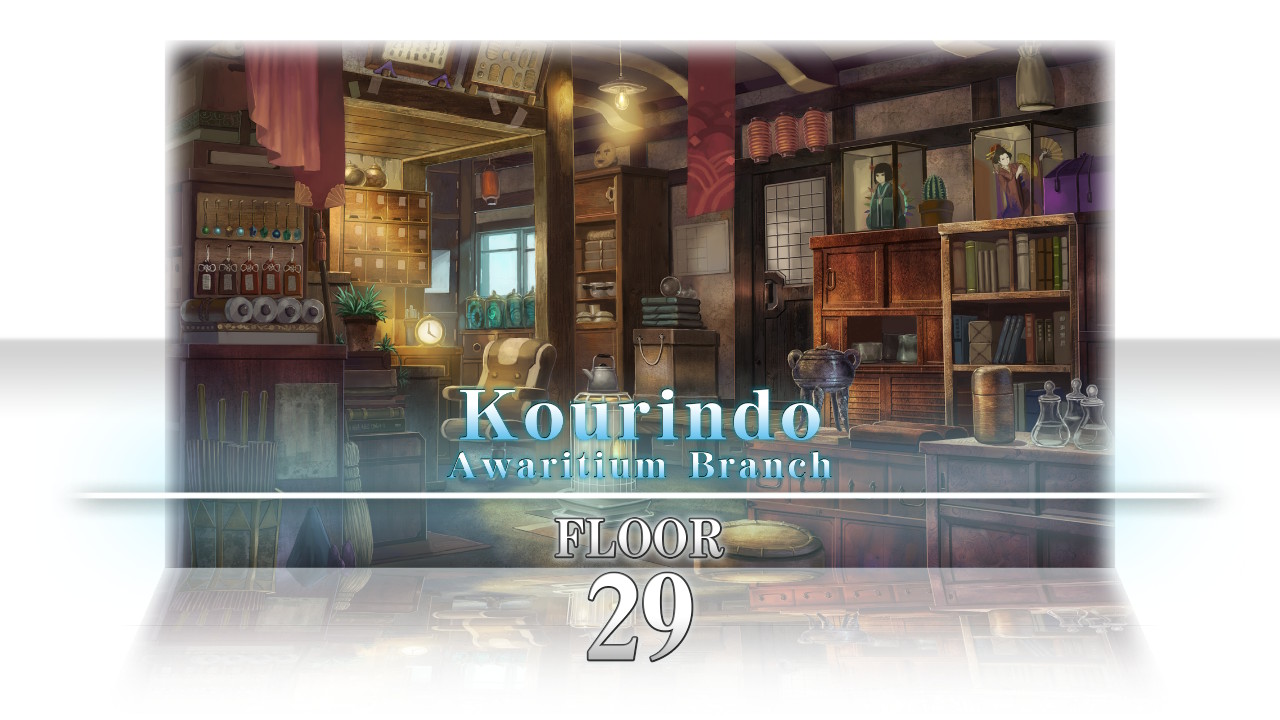
Presentation
The graphics are slick and colorful, but not especially memorable. The characters that populate the game world are mostly cute anime girls in a chibi style. They aren’t especially well-rendered; which isn’t to say they look bad, the game just looks kind of like a higher-end freemium game. The dungeons are a little plain, but the towns have personality and are rendered in plenty of detail. During the visual novel-style cutscenes there are illustrations of the characters which are nicely drawn. Overall, though, Reloaded just isn’t the most attractive game out there, but it’s presentable.
I barely noticed the music most of the time while I was playing; I suppose it always fit the mood for each scene, though. It just made very little impression on me. The game was fully voice acted, however, which was a nice touch. The voice actresses playing Reimu and her friends were cheery and boisterous, and even though they were speaking in Japanese I still felt the appropriate emotions from their delivery.
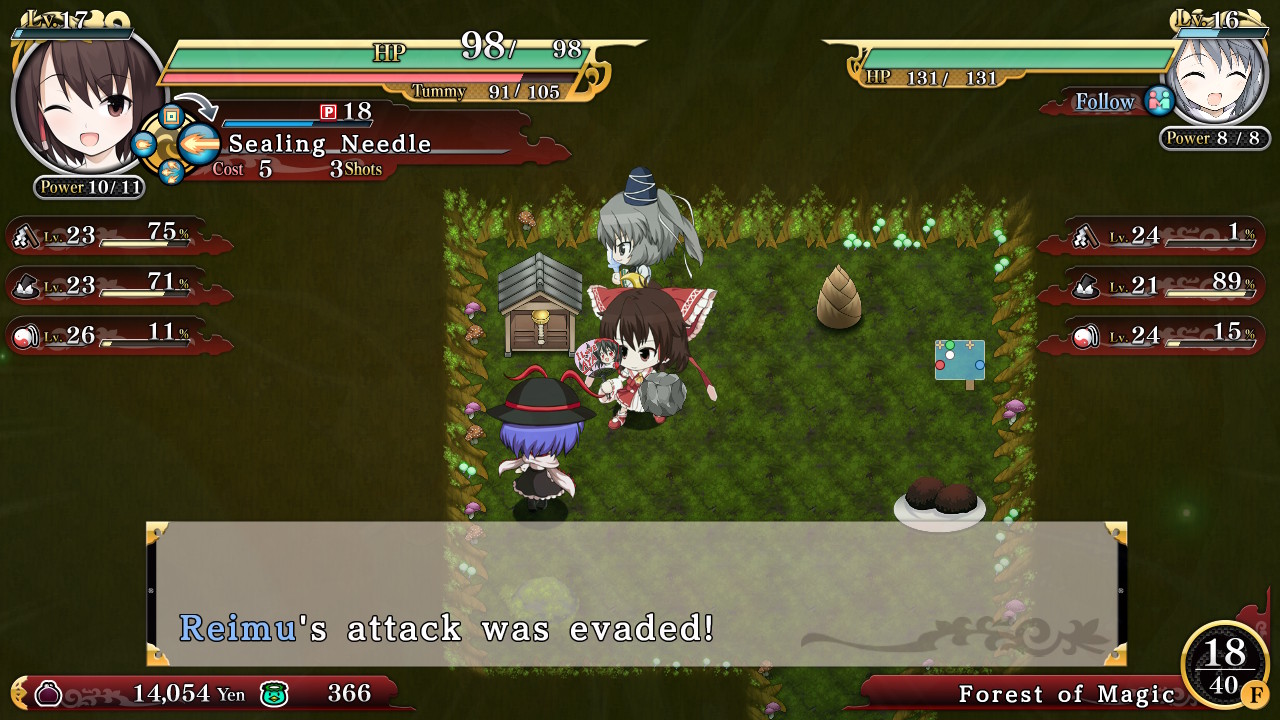
Playability
Touhou Genso Wanderer Reloaded has no touch or motion controls, so it doesn’t matter if you play it docked or undocked. I played it both ways for several hours, and honestly I couldn’t really come up with a reason to recommend one over the other. Just play it the way you like playing your Switch best.
TL;DR: Too much going on, both on-screen and in the game’s backstory, for me to get into it.





Buy Touhou Genso Wanderer Reloaded
$49.99 (Physical)
Follow AQUA STYLE
Follow NIS America

[Review] Hello Kitty and Friends Happiness Parade – Nintendo Switch

Developed By: Dabadu Published By: Rogue Games Categories: Rhythm Release…

